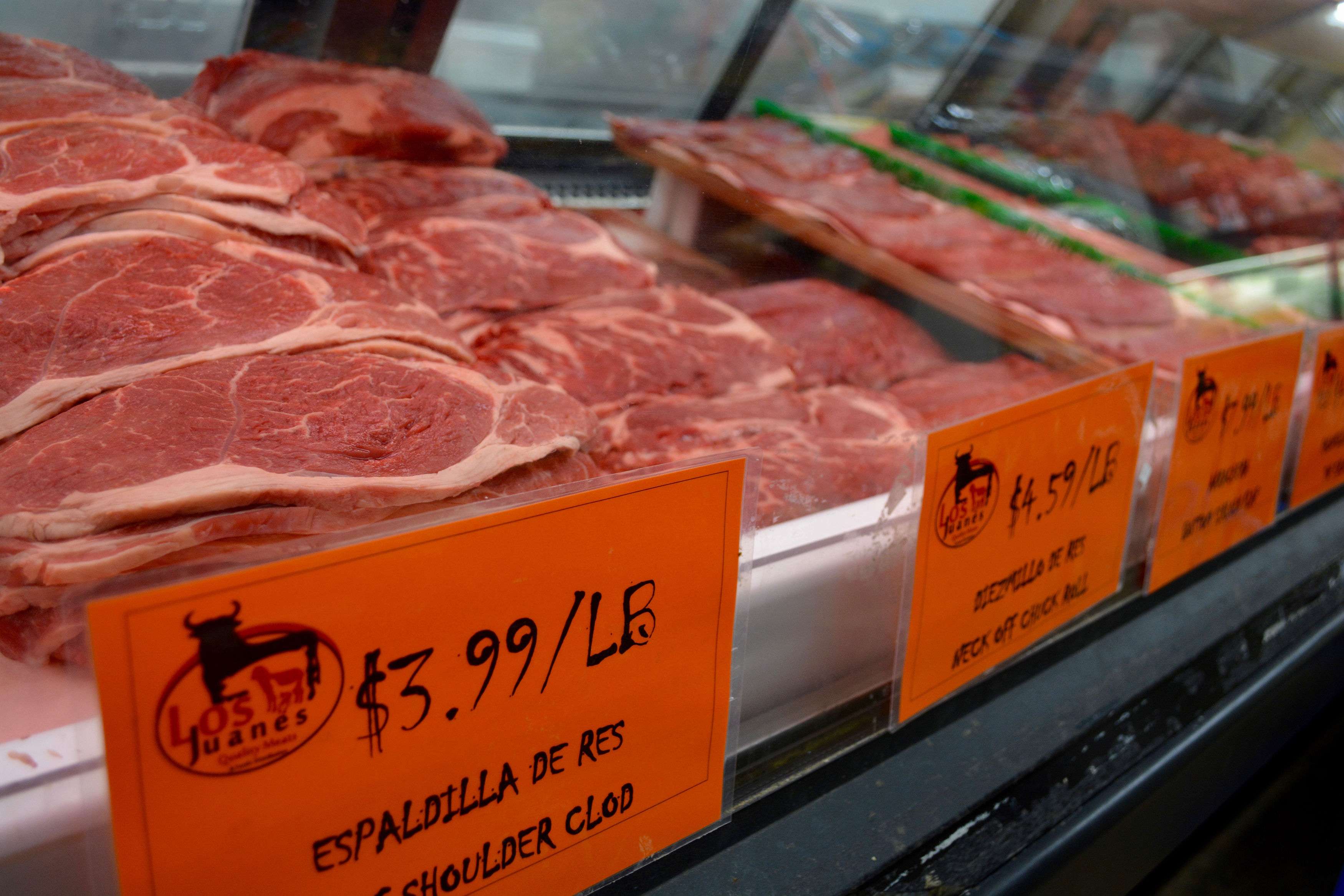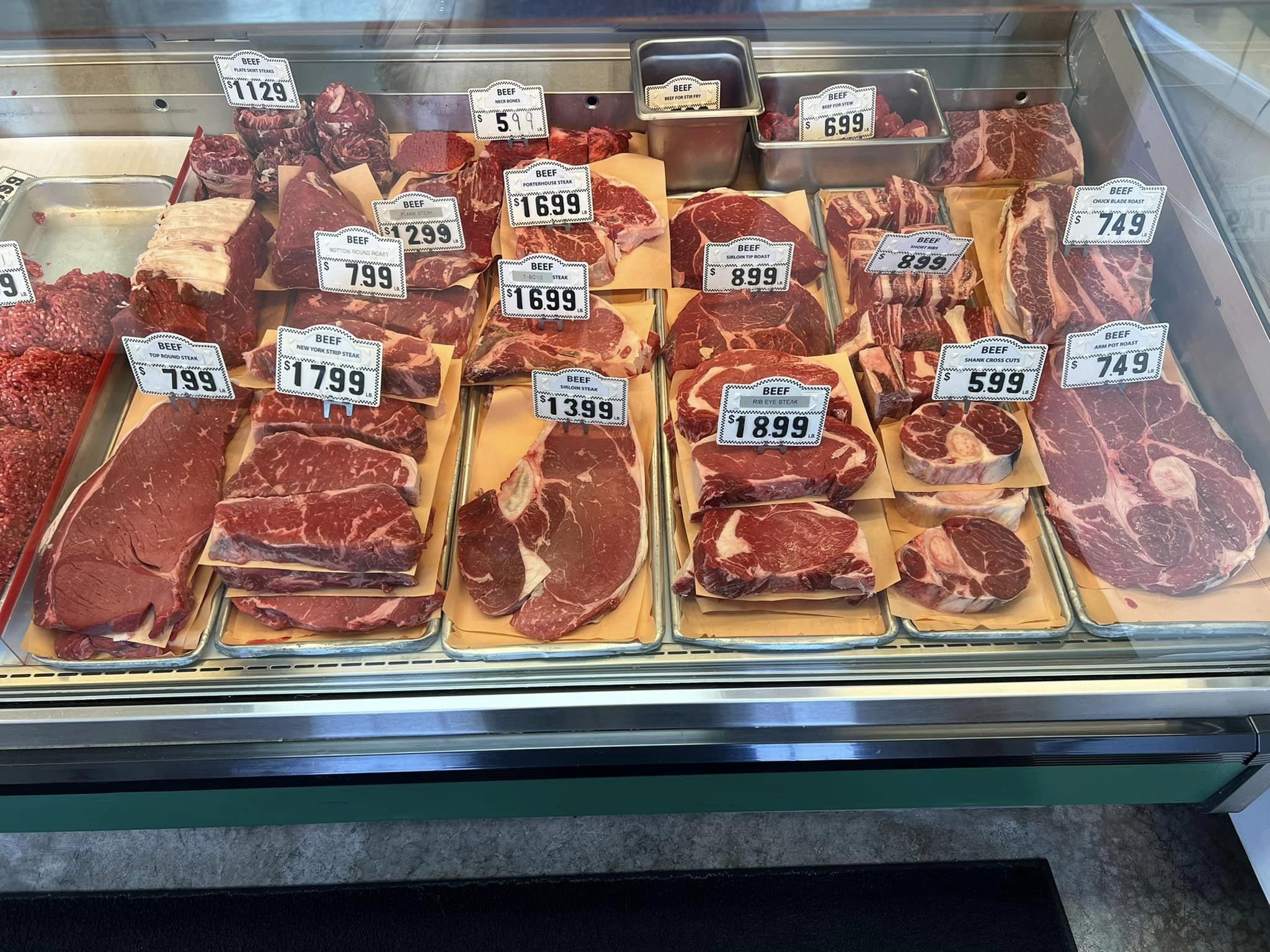Why Bagley Farms Meat Market Edwardsville IL Is the most effective Choice for Quality Meats
Why Bagley Farms Meat Market Edwardsville IL Is the most effective Choice for Quality Meats
Blog Article
Reveal the Art of the Butcher's Cut in a Modern Meat Market
In the ever-evolving landscape of contemporary meat markets, the butcher's cut has actually transcended its standard origins, merging old-time craftsmanship with modern techniques. What truly establishes the modern butcher apart is their capability to build a deeper connection between customers and the beginnings of their meat.
Evolution of Butchery Strategies

The mid-20th century saw butchery techniques additionally fine-tuned by clinical insights into muscle mass biology and meat aging, improving both tenderness and taste. Technologies like vacuum product packaging and refrigeration prolonged product shelf-life, allowing butchers to branch out offerings and enhance quality control. This period likewise marked the surge of customized devices, such as band saws and meat slicers, which raised precision and efficiency in meat processing.
Computerized systems currently aid in monitoring animal provenance and maximizing cuts to fulfill particular consumer preferences. Furthermore, a resurgence in artisanal butchery has actually emerged, blending typical skills with modern-day knowledge to cater to consumers looking for ethical and sustainable meat options.

Understanding Meat Cuts

Understanding the complexities of meat cuts is necessary for both butchers and customers looking for top quality and value. For butchers, precise cuts mirror ability and regard for the craft, guaranteeing very little waste and optimal return.
The key categories of meat cuts consist of primal, sub-primal, and retail cuts. Butchers after that damage these down better into sub-primal cuts, prior to finally creating retail cuts available to consumers, like ribeye or tenderloin.
Comprehending muscle mass composition is important; muscular tissues used much more often by the pet have a tendency to be tougher and are best fit for slow-moving food preparation approaches, while less-used muscular tissues, like those discovered in the loin, are extra tender and perfect for cooking or roasting. Knowledge with these differences equips customers to make enlightened options, enhancing their cooking undertakings.
Picking High Quality Meat
Picking the right meat involves greater than simply picking a visually enticing item from the display screen. The art of selecting quality meat calls for a discerning eye and understanding of certain attributes that represent quality and quality. Pay attention to the color; beef needs to have a brilliant, cherry-red tone, while lamb must display a soft pink tone, and pork a pale pink. This indicates the meat is fresh and hasn't been exposed to oxygen for too long.
Secondly, consider the marbling, which describes the white streaks of fat within the muscle mass. Appropriate marbling is a key indicator of tenderness and taste, as it thaws throughout food preparation, boosting the meat's juiciness. Remember, higher marbling commonly associates with premium quality cuts, such as USDA Prime.
Appearance is an additional vital element; meat ought to really feel firm to the touch, not slimed This Site or overly soft. Furthermore, be conscious of the scent. Fresh meat ought to click here for more have a tidy, neutral smell, without any sour or repulsive odors.
Pairing Cuts With Food Preparation Techniques
Effectively combining cuts of meat with the proper food preparation approaches is important for attaining ideal flavor and appearance. Different cuts vary in tenderness, marbling, and connective cells material, each requiring details strategies to open their capacity. As an example, tender cuts like filet mignon and ribeye, with their intrinsic marbling, take advantage of high-heat, quick-cooking approaches such as cooking or pan-searing. These techniques boost the meat's all-natural tastes and make certain a juicy coating.
Conversely, tougher cuts like brisket and chuck roast are abundant in collagen, which breaks down right into jelly when prepared gradually. These cuts are optimal for braising or slow-moving roasting, allowing the meat to soften in time and establish deep, intricate flavors. Cuts such as short ribs and pork shoulder get on well with slow-cooking methods, where expanded cooking times transform their robust structures right into delicious dishes.
Lamb shanks and oxtail, which call for extended cooking to soften, are excellent prospects for cooking or sluggish simmering. These approaches coax out rich, hearty flavors while keeping wetness. By understanding the unique qualities of each cut, cooks and home chefs alike can elevate their culinary productions, making certain each dish is both satisfying and remarkable.
The Butcher's Function Today
Browsing the progressing landscape of the contemporary meat market, the butcher's role today expands beyond plain prep work of cuts. Contemporary butchers are culinary craftsmens, instructors, and supporters for lasting techniques.
Along with crafting accurate cuts, butchers now involve directly with customers, offering cooking advice and tailoring selections to match private requirements and preferences. Their proficiency in meat aging, marbling, and taste accounts empowers index customers to make informed decisions, improving their culinary experiences. This customized service exemplifies the butcher's evolving role as a relied on expert in the kitchen area.
Additionally, butchers are crucial in minimizing waste, using whole pets to create varied products such as sausages and stocks - bagley farms meat market edwardsville il. This extensive strategy not only values the animal yet additionally lines up with modern sustainability goals. In this means, the modern-day butcher personifies both practice and technology, adapting to an ever-changing market while maintaining the creativity and honesty of their craft

Verdict
The modern butcher's craft elaborately weaves traditional techniques with modern-day developments, emphasizing lasting techniques and moral sourcing. Proficiency in understanding diverse meat cuts and top quality signs equips butchers to give enlightened referrals, lining up details cuts with optimum cooking approaches. This proficiency not just boosts culinary experiences however likewise enhances the link in between customers and the origins of their food. By recognizing historic techniques while welcoming contemporary demands, the butcher's role remains vital in today's advanced meat market.
Report this page